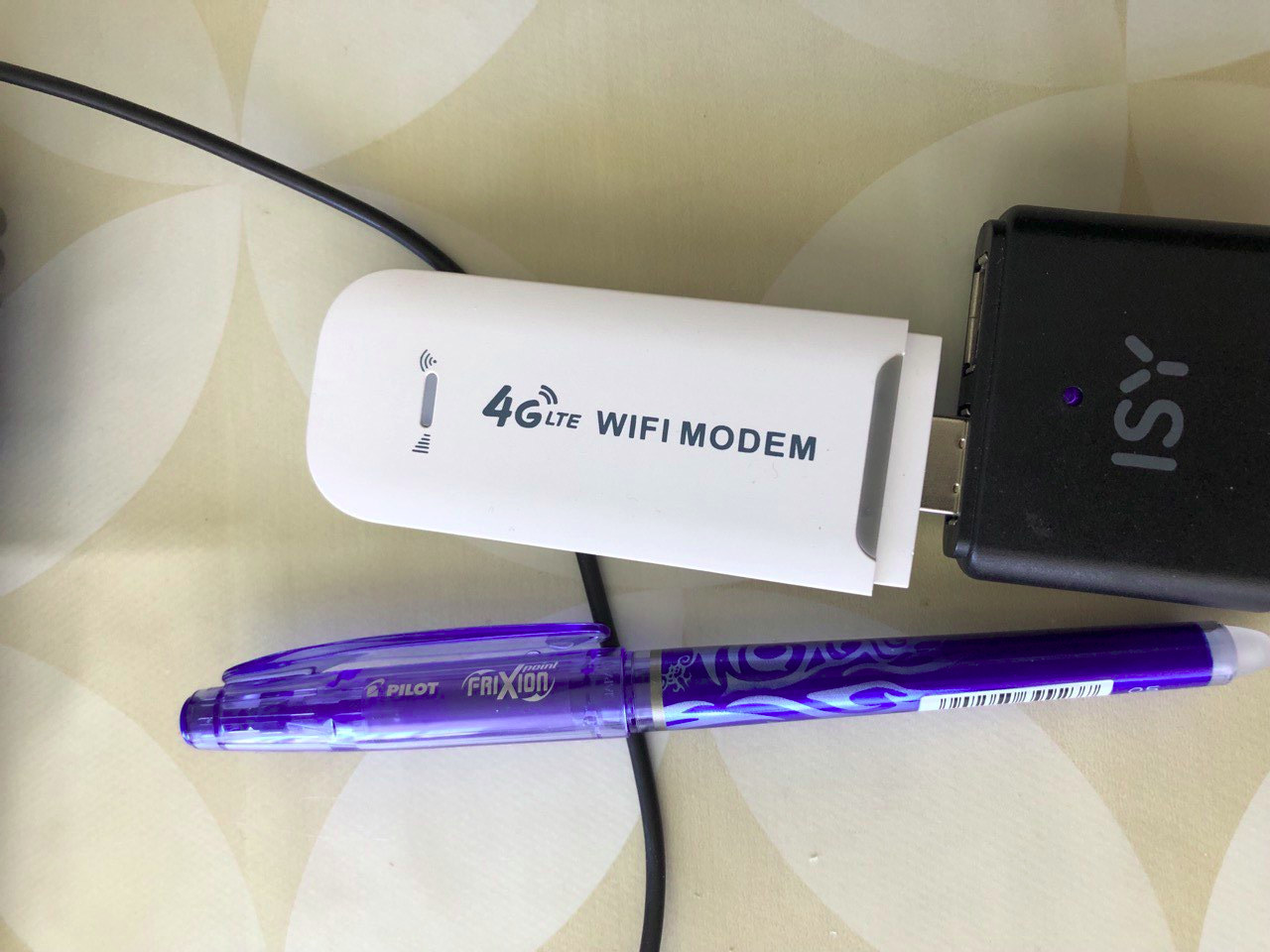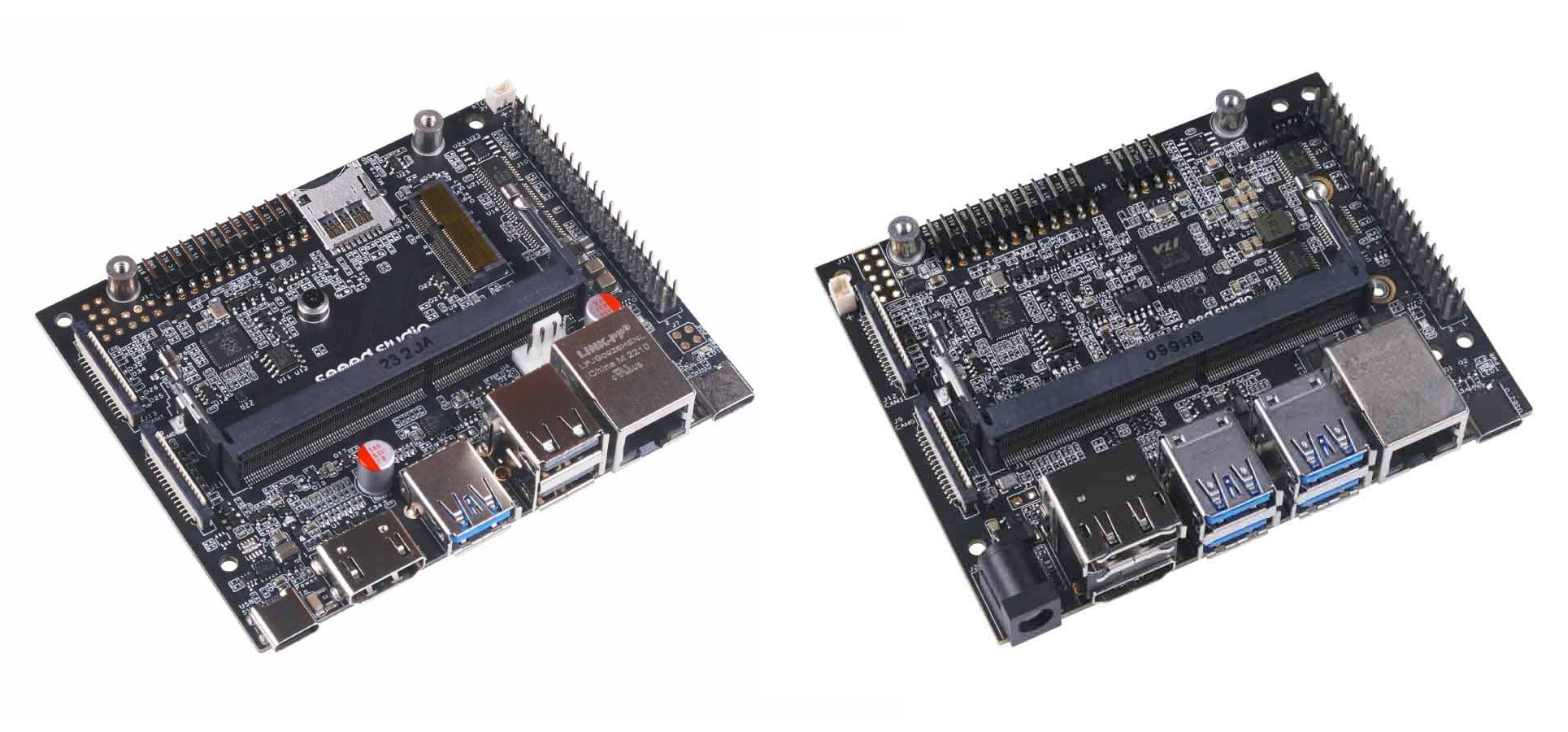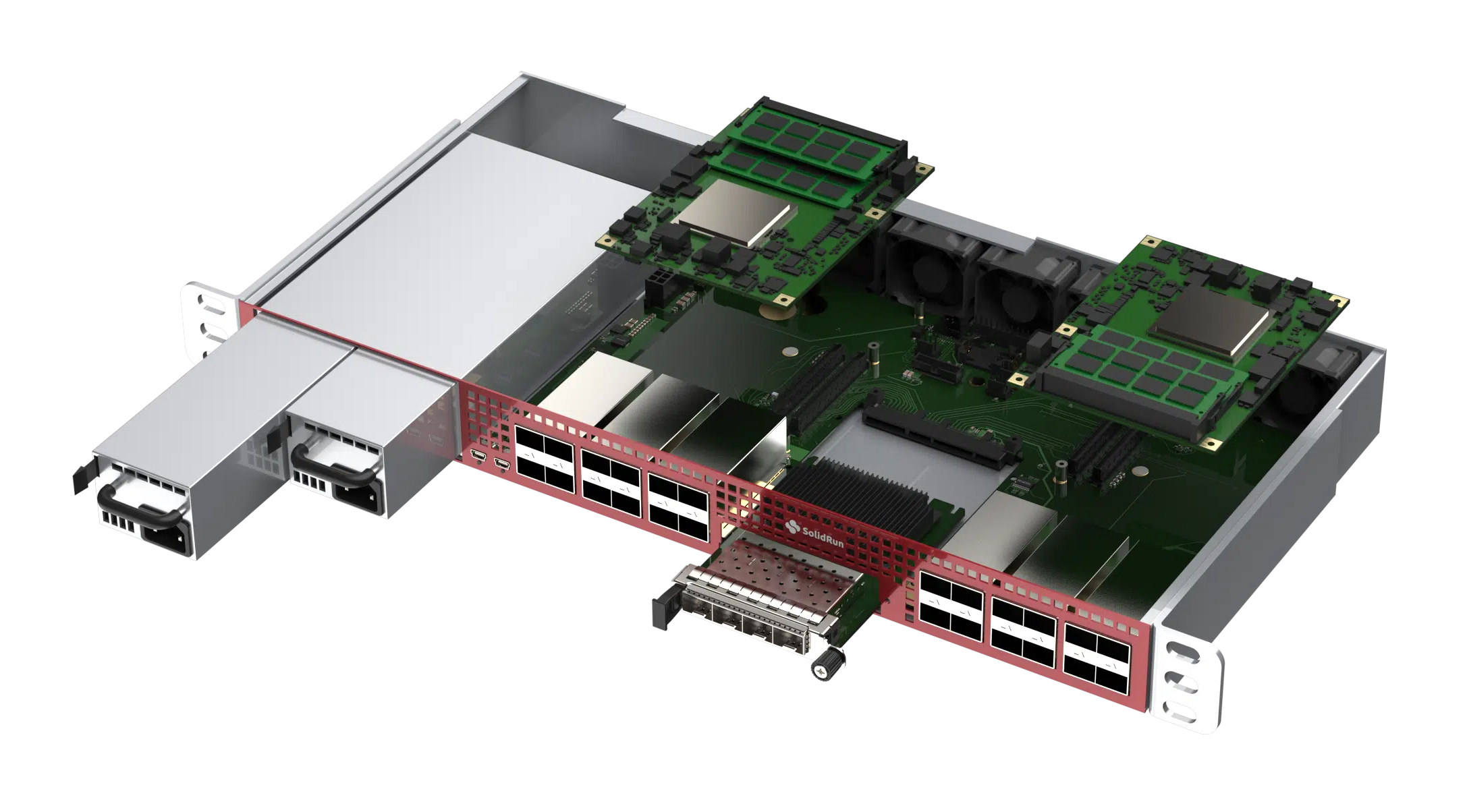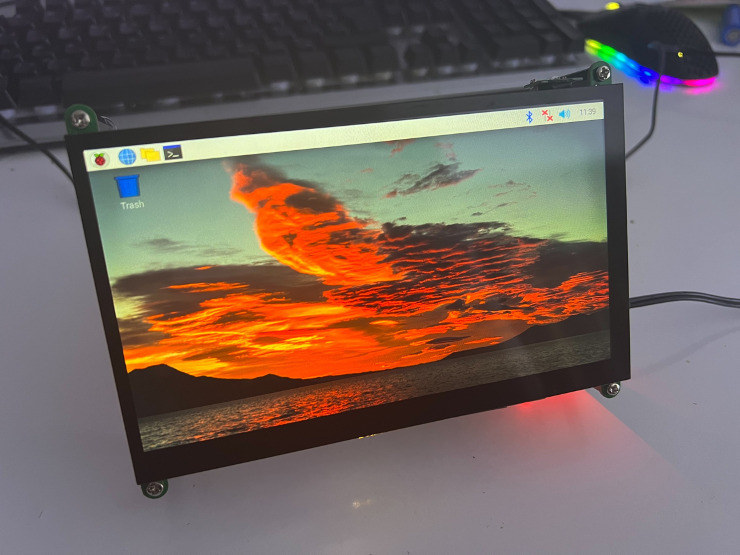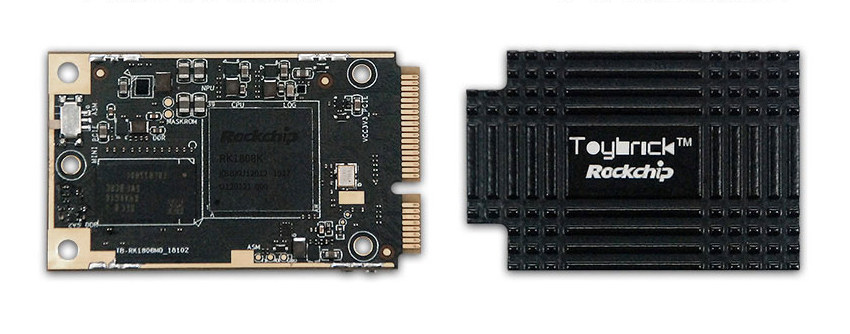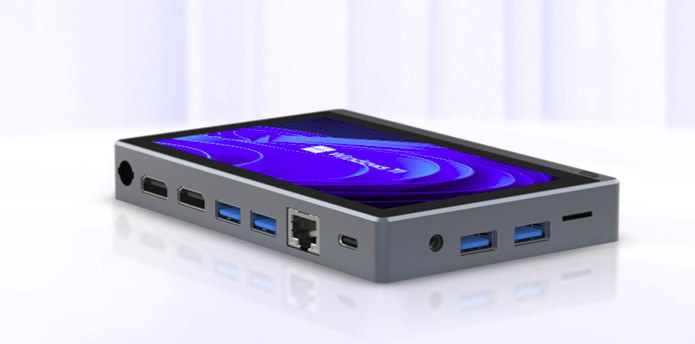Some ultra-compact 4G LTE wireless routers housed in what looks like a largish USB dongle are based on Qualcomm Snapdragon 401 (MSM8916) quad-core Cortex-A53 processor and have been hacked to run Debian 11 with Linux 5.15 instead of the pre-loaded Android OS. Soon after Extrowerk had purchased a ~$20 “4G LTE WiFi modem” USB dongle, he noticed it would show as “Android” when connected to his PC. It also turned out that Chinese hacker HandsomeYingYan had already done some work on the device modding the lk2nd bootloader and the Linux kernel for the OpenStick project for “mainline Linux on msm8916-based 4G USB modem”, and documented his work (in Chinese) to run Debian 11 on the “4G USB WiFi Modem” pictured below. Let’s go through some of the specifications of the said wireless router: SoC – Qualcomm Snapdragon 410 (MSM8916) quad-core Arm Corte-A53 processor with System Memory – 512 MB RAM […]
NVIDIA Jetson AGX Orin 32GB production module is now available
NVIDIA Jetson AGX Orin 32GB production module is now in mass production and available after the 12-core Cortex-A78E system-on-module was first announced in November 2021, and the Jetson AGX Orin developer kit was launched last March for close to $2,000. Capable of up to 200 TOPS of AI inference performance, or up to 6 times faster than the Jetson AGX, the NVIDIA Jetson AGX Orin 32GB can be used for AI, IoT, embedded, and robotics deployments, and NVIDIA says nearly three dozen partners are offering commercially available products based on the new module. Here’s a reminder of NVIDIA Jetson AGX Orin 32GB specifications: CPU – 8-core Arm Cortex-A78AE v8.2 64-bit processor with 2MB L2 + 4MB L3 cache GPU / AI accelerators NVIDIA Ampere architecture with 1792 NVIDIA CUDA cores and 56 Tensor Cores @ 1 GHz DL Accelerator – 2x NVDLA v2.0 Vision Accelerator – PVA v2.0 (Programmable Vision […]
reComputer J101/J202 carrier boards are designed for Jetson Nano/NX/TX2 NX SoM
Seeed Studio’s reComputer J101 & J202 are carrier boards with a similar form factor as the ones found in NVIDIA Jetson Nano and Jetson Xavier NX developer kits, but with a slightly different feature set. The reComputer J101 notably features different USB Type-A/Type-C ports, a microSD card, takes power from a USB Type-C port, and drops the DisplayPort connector, while the reComputer J201 board replaces the micro USB device port with a USB Type-C port, adds a CAN Bus interface, and switches to 12V power input instead of 19V. The table below summarizes the features and differences between the Jetson Nano devkit (B1), reComputer J101, Jetson Xavier NX devkit, and reComputer J202. Note the official Jetson board should also support production SoM with eMMC flash, but they do ship with a non-production SoM with a built-in MicroSD card socket instead. The carrier boards are so similar that if NVIDIA would […]
Linux 5.19 Release – Main changes, Arm, RISC-V and MIPS architectures
Linus Torvalds has just announced the release of Linux 5.19. It should be the last 5.xx version, with Linux 6.0 coming for the next cycle: So here we are, one week late, and 5.19 is tagged and pushed out. The full shortlog (just from rc8, obviously not all of 5.19) is below, but I can happily report that there is nothing really interesting in there. A lot of random small stuff. In the diffstat, the loongarch updates stand out, as does another batch of the networking sysctl READ_ONCE() annotations to make some of the data race checker code happy. Other than that it’s really just a mixed bag of various odds and ends. On a personal note, the most interesting part here is that I did the release (and am writing this) on an arm64 laptop. It’s something I’ve been waiting for for a _loong_ time, and it’s finally reality, […]
SolidRun introduces SolidWAN software-defined edge network hardware with NXP LX 16-core Cortex-A72 SoCs
SolidRun has launched two SolidWAN Linux-based system-level solutions for software-defined wide area networks and network security applications with the SolidWAN Single LX2162 based on NXP LX2162 16-core Cortex-A72 SoC designed for small offices (SoHo) and SMBs, and the SolidWAN Dual LX2160 equipped with two NXP LX2160A 16-core Cortex-A72 networking processors targetting enterprise and edge data center applications. SolidWAN Single LX2162 Hardware specifications: SoC – NXP Layerscape LX2162A 16-core Arm Cortex A72 processor @ up to 2GHz System Memory – Up to 32GB DDR4 Storage – 8GB eMMC flash, MicroSD card slot Networking 8x dedicated Gigabit Ethernet ports 2x SFP 10GbE cages 2x SFP 25GbE cages USB – 1x USB 3.0 port Expansion card I/Os Mini PCIe socket with SIM holder for 4G LTE cellular connectivity Mini PCIe socket for WiFi AP mPCIe module Management USB to STM32 for remote management RunBMC compliant socket Development and Debug interfaces – Mini USB, […]
Review of SunFounder TS7-Pro 7-inch touchscreen display for Raspberry Pi 4
Unboxing SunFounder TS7-Pro touchscreen display SunFounder TS7-Pro is a 7-inch touchscreen display designed for Raspberry Pi 4 board and the company sent us one review sample for evaluation. SunFounder has a wide range of Raspberry Pi and Arduino accessories designed for makers, and the TS7-Pro 7 is their latest offering that’s optimized to work with Raspberry Pi 4 and Raspberry Pi 3. Adding a touchscreen display to a Raspberry Pi may be a bit messy with the display or other accessories such as cameras and/or 2.5-inch drive spread on the table, but the TS7-Pro display simplifies all that with a neater assembly. Let’s start the review with an unboxing The package is compact and the display is well-protected with polyethylene foam to reduce the risk of damage during transport. Accessories such as cables, screws and nuts, adapters, an acrylic enclosure, and a screwdriver are also included in the package. Here’s […]
mini PCIe module features Rockchip RK1808K SoC with 3.0 TOPS NPU
Rockchip RK1808 SoC with a built-in 3.0 TOPS AI accelerator has been around since 2019, and we’ve seen it in USB compute sticks, SBCs, and even in Pine64 SoEdge-RK1808 SO-DIMM module, but somehow never in the more widely used M.2 or mPCIe form factors. Toybrick TB-RK1808M0 changes that and offers Rockchip RK1808K SoC coupled with 1GB RAM and an 8GB eMMC flash in a mini PCIe module that exposes USB 3.0, USB 2.0, UART, and GPIO signals. Toybrick TB-RK1808M0 specifications: SoC – Rockchip RK1808K CPU – Dual-core Cortex-A35 processor @ up to 1.4 GHz AI Accelerator – 3.0 TOPS NPU for INT8 inference (300 GOPS for INT16, 100 GFLOPS for FP16) VPU – 1080p60 H.264 decode, 1080p30 H.264 encode System Memory – 1GB DDR Storage – 8GB eMMC flash Host interface – Mini PCIe edge connector with USB 3.0, USB 2.0, UART, and GPIO Misc – Heatsink for cooling Supply […]
GOLE1 Pro mini PC comes with 5.5-inch touch screen display, Gemini Lake processor (Crowdfunding)
GOLE1 was quite a unique mini PC when it launched in 2016 as it included a 5-inch touchscreen display. HIGOLE is now back with the GOLE1 Pro based on a similar design, but a slightly larger 5.5-inch touchscreen display, and much better specs suitable for 2022’s software and entry-level use cases. The Atom x5-Z8300 “Cherry Trail” processor found in the original device gives way to an Intel Celeron N4200 or J4125 Gemini Lake processor, and the GOLE1 Pro mini PC, which the company sometimes also calls “HIGOLE PC 2022”, comes with up to 8GB LPDDR4X, a 128GB SSD, Gigabit Ethernet, WiFI 6 or 5, four USB 3.0 ports, and more. GOLE1 Pro specifications: SoC (one or the other) Intel Celeron J4125 quad-core processor @ 2.00 GHz / 2.70 GHz (Turbo) / 2.4 GHz (Turbo all cores) with 12EU Intel UHD Graphics 600 @ 250 MHz / 750 MHz (Turbo); 10W […]


